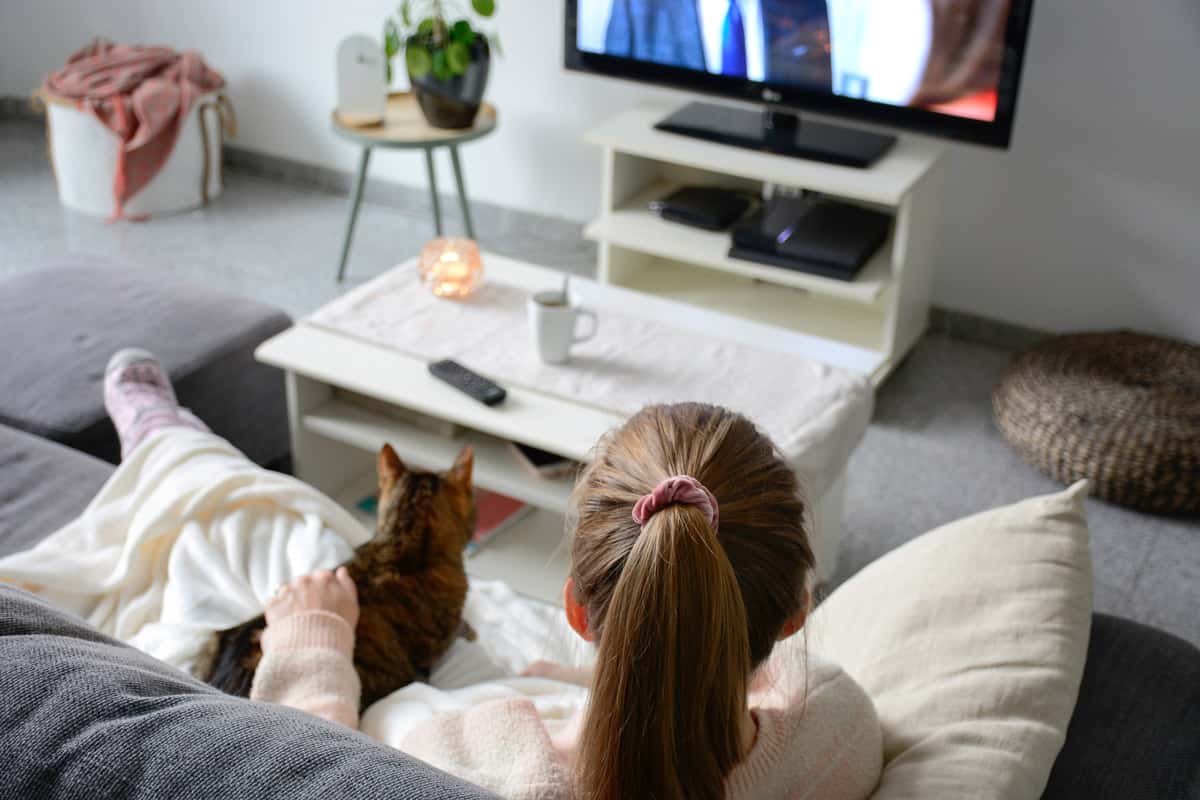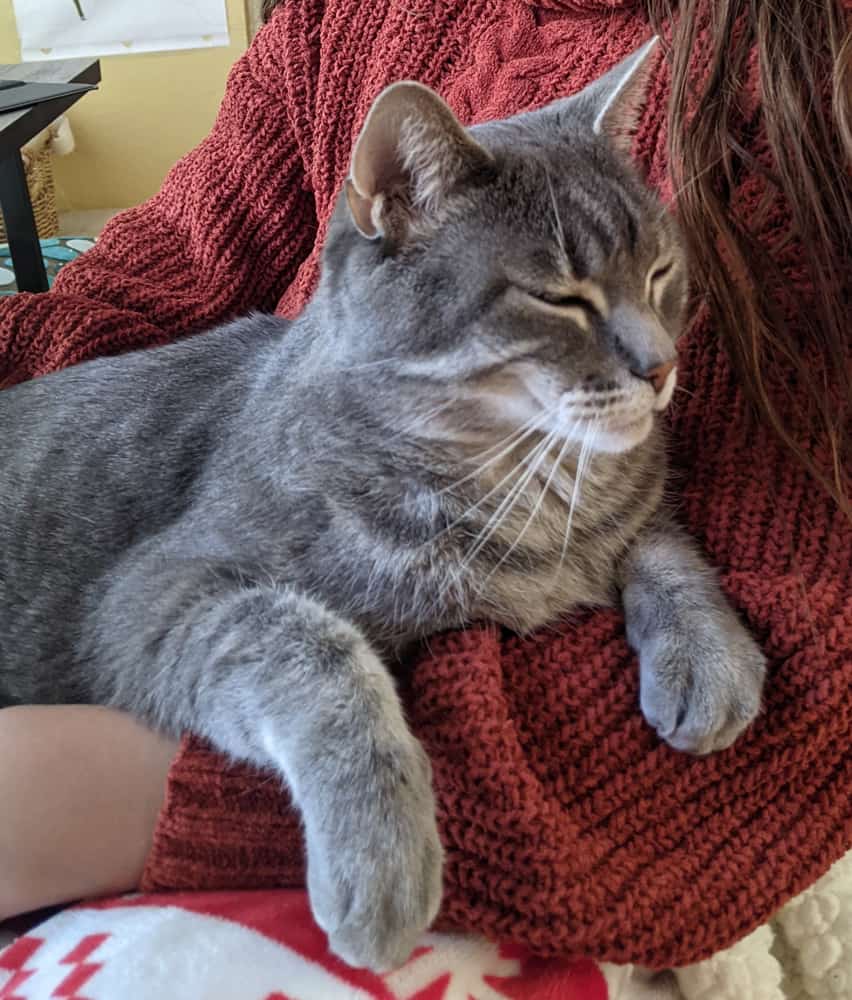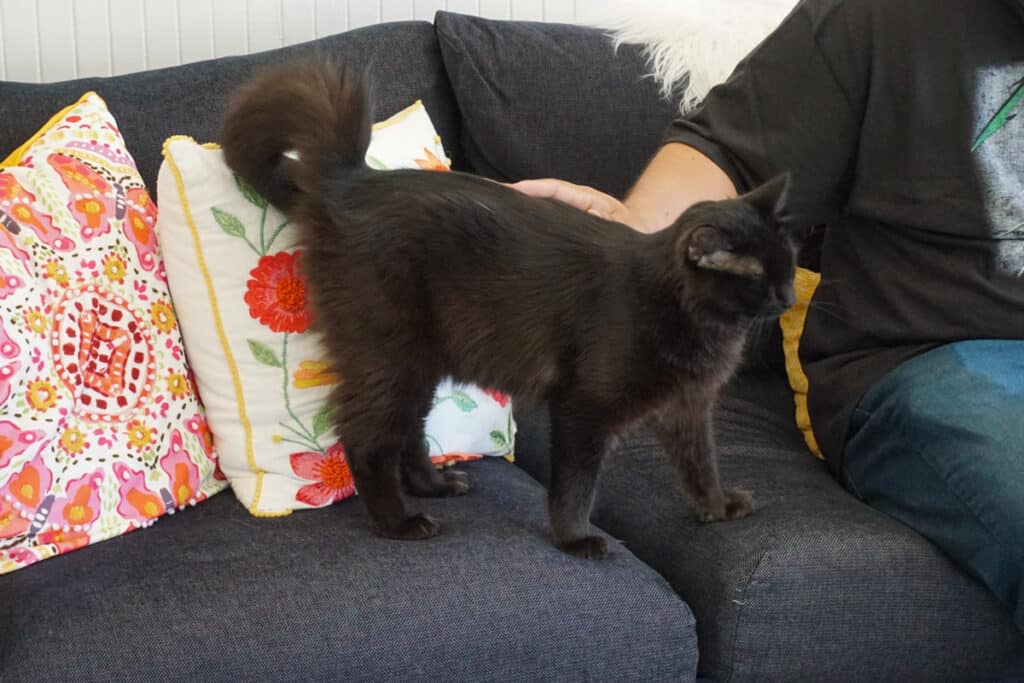The running joke among people is that cats, when in a room full of people, will gravitate towards the one person who hates, or is allergic to, cats. Inevitably, that’s the person the cat will choose to rub up against or settle in their laps.
The irony in this situation is that cats are independent creatures who like to be approached on their terms and that’s what attracts them to the one person in the room that doesn’t actually want them to approach.
There are several reasons for this.
Eye contact with cats
The first thing an excited person does when a cat is near them is to look straight at the cat. The wide opened look you give the cat is actually considered aggressive in the world of cat communication. Cats will avoid other animals and humans that are looking directly at them.
The person that is avoiding them is viewed as less of a threat in this situation. A small Swiss study that quantified the human-cat interactions in 51 homes found that when the owners focused on other activities when sitting and ignored their cat, the cats were more likely to approach them and want to engage. [1]

Cats don’t like uninvited intrusions into their personal space
Cats also like to be the initiators when it comes to physical touching and interactions. Unsolicited pets, grabbing or picking up the cat are frequently unwelcome interactions.
Cats like to approach humans, especially strangers, on their own terms.
The length of time a cat interacts with humans increases when the cat is the initiator of the interaction. One researcher found that cats played longer and had a more positive experience when they initiated the play time rather than the human. [2]
How to get a cat to interact with you
The best approach to getting a cat to interact with you is to respect their intentions. Don’t corner or chase after the cat and don’t pick up the cat, pull on their tail, or try and pet them right away. Wait for the cat to approach you.
If the cat does approach, gently hold out your fingertips slightly below the level of their nose and let them come and sniff you. The cat may just take a sniff and walk away. They might also opt to come closer to inspect you.
After they have had a chance to sniff you, ignore them for a few minutes. Remember, as the Swiss researchers learned, playing hard to get is a more successful strategy to getting a cat to want to interact with you.
If you find it too hard not to look over at the cat, you can trying communicating your benign intentions by slow blinking at the cat. To slow blink, relax your face and close your eyes halfway, then slowly close them all the way. After a few seconds, open your eyes back up and keep them relaxed.
Researchers who studied the interactions of cats with strangers found that humans who slow blinked at these cats were more likely to approach them. [3]

If the cat seems like they are happy to be near you, you can try to gently pet them around the cheeks and forehead. Pay attention to body language. Cats mostly communicate through their body language.
A tense body, swishing tail, or flattened ears are all signs that the cat is not happy. If the cat is giving off any negative signs, that is a sign that the cat doesn’t want you to pet them. Respecting the cat’s boundaries is an important step in building trust (and also saves you from getting bit or scratched).
References
[1] Mertens, C. (1991). Human-cat interactions in the home setting. Anthrozoös, 4(4), 214-231. https://doi.org/10.2752/089279391787057062
[2] Turner, D. C. (1991). The ethology of the human-cat relationship. Schweizer Archiv fur Tierheilkunde, 133(2), 63-70. https://europepmc.org/article/med/2047832
[3] Humphrey, T., Proops, L., Forman, J., Spooner, R., & McComb, K. (2020). The role of cat eye narrowing movements in cat–human communication. Scientific reports, 10(1), 1-8. https://doi.org/10.1038/s41598-020-73426-0







